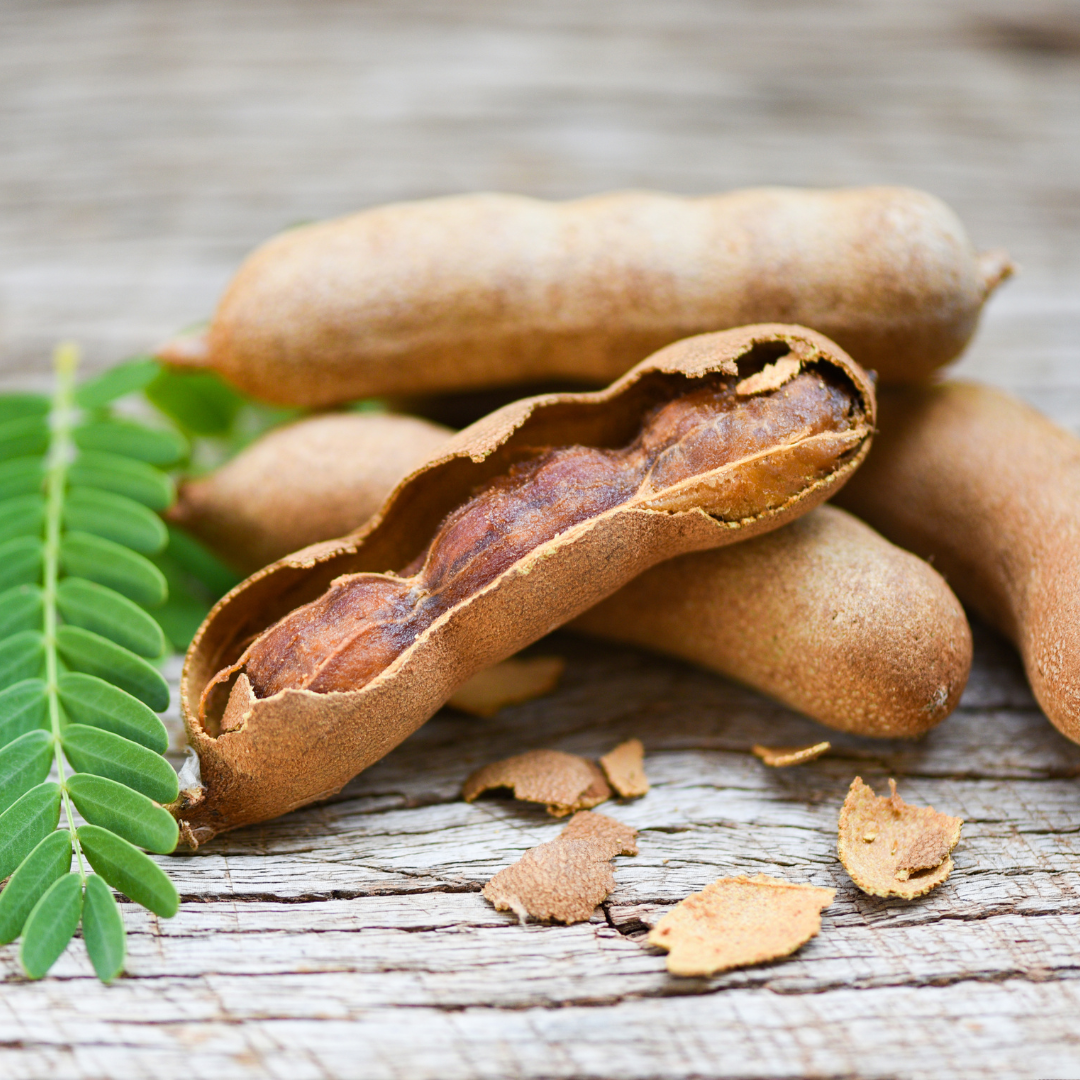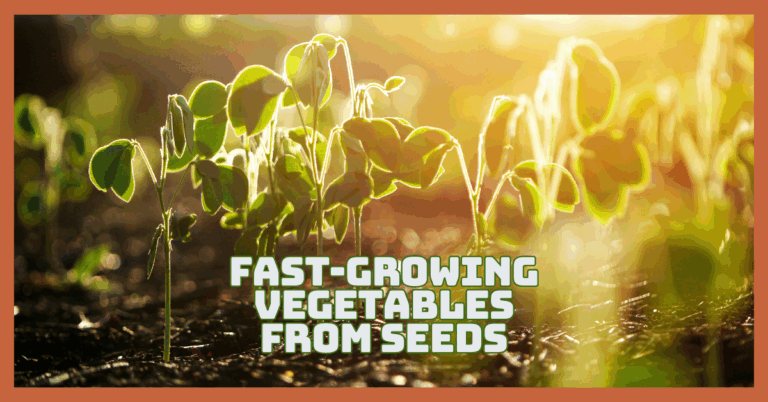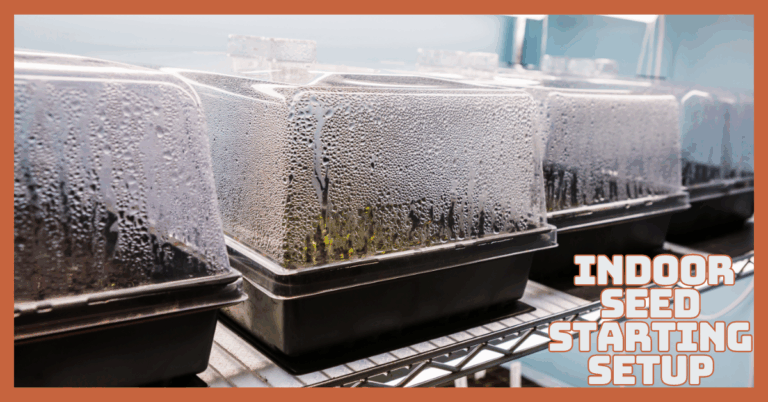Easy Ways To Grow Tamarind In Your Home Garden
Easy Ways To Grow Tamarind In Your Home Garden
In warm areas, the tamarind tree (Tamarindus indica) is grown as a commercial crop and for its utility as a huge shade tree.
Although native to Africa's tropical climates, tamarind thrives in US Department of Agriculture plant hardiness zones 10 and 11.
Growing a tamarind tree properly helps assure its lifespan, yet the truth is that it will probably outlive you. A specimen planted on the Punahou School's Hawaiian campus in 1842 remains.
Although the tamarind tree lives a long time, it grows at a modest pace. A healthy tree grows 12 to 36 inches per year until it reaches a mature height of 40 to 60 feet and a mature spread of 40 to 50 feet, creating a rounded or vase shape.
According to California Polytechnic State University's Urban Forest Ecosystems Institute, its evergreen foliage is so dense that it is rated “extremely dense” for its shade capacity.
Drought tolerance is one of the tamarind's adaptations to warm climates, despite growing best in wet soil. Its spring flowers are not particularly beautiful, and you're more likely to notice the bean-like seed pods that grow after the flowers fade.
Tamarind is also resistant to salt spray, which is beneficial if you reside in a coastal region where this tree flourishes, such as South Florida, Coastal California, or Hawaii.
This article will show you how to grow tamarind in your home garden and its health benefits.
Taste Of Tamarind
Tamarind comes in two flavours: sweet and sour. Although most trees in India produce sour fruits, the tamarind offered fresh to consumers is a sweeter kind.
Tamarinds, like dates, have a gummy, sticky texture. It has a strong, assertive flavour with no suppressed flavours or lingering aftertaste.
Tamarinds have an explosive, tart flavour akin to sweet-sour candy. When tasting the sour kind, expect a puckering sensation similar to eating a lemon or decorative orange.
Nutritional Value Of Tamarind
According to the USDA nutrient database, 100g of tamarind contains the following values:
- Calories: 239kcal
- Fat (1% RDI): 1g
- Sodium (1% RDI): 28mg
- Carbohydrate (21% RDI): 63mg
- Fibre (20% RDI): 5g
- Protein (6% RDI): 2.8g
- Vitamin A (1% RDI): 30IU
- Vitamin C (6% RDI): 3.5mg
- Vitamin K (3% RDI): 2.8mcg
- Thiamin (29% RDI): .4mg
- Riboflavin (9% RDI): .2mg
- Niacin (10% RDI): 1.9mg
- Vitamin B6 (3% RDI): .1mg
- Folate (3% RDI): 14mcg
- Calcium (7% RDI): 74mg
- Iron (16% RDI): 2.8mg
- Magnesium (23% RDI): 92mg
- Phosphorous (11% RDI): 113mg
- Potassium (18% RDI): 628 mg
- Copper (4% RDI): .1mg
- Selenium (2% RDI): 1.3mcg
Cooking Uses Of Tamarinds
Tamarind pulp is widely used in cooking throughout South and Southeast Asia, Mexico, the Middle East, and the Caribbean. The seeds and the leaves are both edible.
Sauces, marinades, chutneys, beverages, and sweets all contain Tamarind pulp. It's also a component in Worcestershire sauce.

Medicinal Uses Of Tamarind
Tamarind has long been used in traditional medicine.
It was extensively used in beverage form to treat diarrhea, constipation, fever, and malaria. The bark and leaves were also utilized to aid in healing wounds.
Modern experts are studying this herb for potential medical purposes. Tamarind polyphenols have antioxidant and anti-inflammatory effects, which can help prevent ailments like heart disease, cancer, and diabetes.

Cosmetic Uses Of Tamarind
1. Tamarind Seed Extracts For Skin
Tamarind seed extracts improve skin elasticity and provide smoothness and moisture. Hyaluronic acid aids in moisturization and reduces wrinkles and fine lines. It is also utilized as an anti-aging compound in toners, gels, and masks.
2. Skin Lightening Agent
Tamarind extracts are often used to lighten the skin. Boil 30 grams of tamarind in 75 millilitres of water to form a lump-free pulp. Add some turmeric to it and apply it to your face and neck. After 15 minutes, wash your hands. Doing this three times a week results in perfect skin.
3. Skin-Hydrating Toner
Tamarind and tea water combine to form an excellent skin-hydrating toner. This blend nourishes your skin and is ideal for oily skin. Dip a cotton swab in this mixture and apply it all over your face to tone your skin.
4. Face Scrub
Combine one spoon of tamarind pulp with sea salt and one tablespoon of curd or milk. Apply this paste to your face and scrub in a circular motion to remove dead skin layers and enhance shine.
Health Benefits Of Tamarind
1. Tamarind Can Help With Constipation And Diarrhea
The laxative properties of tamarind are well known in folk medicine. It is maybe the most critical application given by ancient societies from India to Africa. I
t promotes excretion in persons with chronic constipation due to its significant (but not excessive) amount of dietary fibre, potassium, and tartaric acid. Infusions made from the leaves of the tamarind plant are recommended in cases of diarrhea.
2. Relieves Stomach Ache And Constipation
Tamarind has traditionally been used as a laxative due to its high levels of malic and tartaric acids. It also contains potassium bitartrate, which, along with other active substances, reduces constipation.
Constipation and diarrhea are common causes of stomach pain. Tamarind bark and root extracts are effective in treating stomach pain. In Nigeria, soaked tamarind is used to alleviate constipation.
3. Protects Liver
The liver is one of our system's most vulnerable organs due to modern living. It plays an integral part in detoxifying and digestion, and you must assist him as much as possible.
Tamarind could be a fantastic alternative to take care of the liver. It should be consumed as a regular meal in case of liver toxicity generated by alcohol or non-alcoholic fatty liver diseases.
It's also worth noting that, to reap the benefits of these and other natural remedies, you must avoid combining them with refined sugar and allergens such as gluten and dairy products (if you use tamarind for desserts).
These ingredients cause immune reactions—in celiac and lactose-intolerant people as well as normal people—that prevent the body from absorbing the benefits of tamarind and other healthy foods.
4. Boosts Heart Health
This fruit may benefit heart health in various ways. It includes polyphenols and flavonoids, some of which can aid with cholesterol regulation.
In one trial of hamsters with high cholesterol, tamarind fruit extract was lower in total cholesterol, LDL (bad) cholesterol, and triglycerides.
Another in vivo animal study discovered that the antioxidants in this fruit could help reduce oxidative damage to LDL cholesterol, a significant cause of heart disease.
5. Prevents Acne
Tamarind has numerous health benefits because the majority of health issues we face are directly related to metabolic disorders and chronic inflammation, and the properties of this fruit – like many other natural foods – act on regulating and shutting down this permanent unbalance, which can sometimes cause damage to our skin, including acne.
6. Manages Diabetes
Tamarind reduced blood sugar levels in diabetic rats. Even in rats with severe diabetes, this fruit could reduce hyperglycemia.
Inflammation of pancreatic cells, particularly those that make insulin, is one of the significant causes of diabetes (beta cells).
Tamarind can protect the pancreas from inflammation-induced damage by inhibiting the synthesis of pro-inflammatory molecules such as TNF alpha.
The seeds of this fruit can stimulate pancreatic beta-cell neogenesis (the formation of new cells). This may help diabetic individuals regain their ability to manufacture the necessary quantities of insulin.
7. Control Weight
Obesity is caused by overeating and metabolic abnormalities that prevent your body from adequately utilizing energy and fat from food.
To address this, we must maintain a physically active lifestyle and eat nutritious, organic food as much as possible.
Tamarind has been found to control lipid metabolism, facilitating detoxification and promoting the proper use of harmful and beneficial fats 2.
Nature might be your greatest ally in maintaining your health and happiness. Tamarind is only one example.
Ways To Grow Tamarind
1. Growing Tamarind From Seed
The safest methods for breaking through the hard shells surrounding the embryos for home gardeners involve boiling water and extended soaking.
When preparing seeds for germination, wear gloves and safety goggles to protect your hands and eyes from hot water splashes.
Bring water to a boil in a teapot. Add the seeds to a mug half-full of hot water. Allow the seeds to soak in the mug, out of reach of youngsters and dogs, for at least one hour.
Alternatively, place the seeds in a jar partly filled with lukewarm tap water. Before planting, soak the seeds for 12 to 24 hours.
Sow the seeds half an inch deep in a wet seed-starting mix. After placing them on a seed-heat pad, cover the tray or pots with plastic wrap or a plastic cover.
Mist the mixture as needed to keep it moist but not wet. Boiling water treatment causes seeds to germinate in about 12 days while soaking for 12 hours causes seeds to germinate in 19 days.

2. Soil To Grow Tamarind
Tamarind grows well on rich loamy soil. It grows well in neutral, gritty, clay, and saline soil. The soil must be well-drained. You don't need to worry about the pH of your soil when growing tamarind.
3. Location To Grow Tamarind
Tamarind enjoys tropical and subtropical climates that are dry and windy. It can adapt to warm temperate climates, but it won't be very fruitful.
Young plants cannot endure cold temperatures, whereas adults are only resistant to temperatures as low as 28 degrees Fahrenheit.
The whole light is the best planting location. The tamarind tree requires a clear sky and dry days to flower, set, and mature fruit.
4. Watering Tamarind
Watering tamarind more frequently is similar to watering most young trees until their roots become established, when mature trees become more drought-tolerant.
The time of year and the kind of soil are two crucial factors impacting when and how much water you should feed your tamarind tree. T
rees, for example, require more water during hot weather, windy conditions, and low humidity times, while clay soil retains water longer than sandy soil.
A water bowl around the stem of a young tamarind tree may be beneficial. To create a water basin, raise the soil several inches to construct a raised berm around the tree's root ball.
When watering a young tree, the Texas A&M Forest Service recommends filling the basin, allowing the water to soak into the ground, and then refilling the basin.
Check the moisture around the roots of a young tree several days after watering it by digging into the soil to 12 inches.
If the soil is dry, it's time to water again; if it's still wet, recheck it in a few days. Repeat this technique several times until you have a “feel” for how frequently you need to water your tree. If your tamarind tree is mature, you may only need to water it once or twice a month if rainfall is insufficient.
5. Fertilizing Tamarind Trees
Tamarind has a low fertilization demand; thus, apply fertilizer according to soil-test recommendations to avoid over-fertilization.
In the absence of a soil test, fertilize young trees every two to three months with 6-6-3 fertilizer or an organic equivalent, beginning with ¼ pound per tree and gradually increasing to ½ pound every year of a tree's age three to four times per year.
If your tamarind tree is producing fruit, fertilize it with 8-3-9 or an organic equivalent at a rate of ½ pound per year of the tree's age, three to four times each year.
Another reason to conduct a soil test before feeding your tree is that tamarind requires microelements such as iron, which may be missing in alkaline soils.
Your local cooperative extension agency can run a soil test for a small fee. To do so, you must bring a soil sample from around the tree to their office.
6. Pruning Tamarind Trees
As it matures, a tamarind tree naturally grows into its typical rounded or vase shape, providing plenty of shade under its dense canopy.
You won't have to shape tamarind as a tree to get this desirable trait. However, according to the University of Florida IFAS Extension, some trees may develop numerous trunks with bark inclusions.
These inclusions are bark wedges that occur between the trunks or between the main trunk and a branch and can weaken a tree.
This problem can be readily avoided by cutting immature tamarind trees. Ensure that the branches emerging from the tree's central trunk are widely apart rather than growing together.
Remove any branches that have grown to be more than half the size of the trunk. To assist prevent disease spread, wipe or soak your pruning tool in ethanol or isopropyl alcohol between each cut.
7. Propagation Of Tamarinds
The most popular way of proliferation nowadays is through seeds. However, because they are heterozygous, they do not breed true to type through seed.
The prevalence of seed propagation also contributes to the extended juvenile phase. Seedlings For economic returns, trees should be planted around 15-20 years.
After 3-4 years, vegetatively propagated plants begin to yield. Approach grafting, air layering, and budding have produced successful vegetative approaches.
Conversely, layers are suitable for planting in dryland settings because they lack a deep-developing tap root system.
To achieve true-to-type plants with reduced pre-bearing age, normal development, and yield, vegetative procedures like budding and grafting should be utilized to develop tamarind orchards.
8. Harvesting Tamarinds
Tamarinds can be left on the tree for up to 6 months after maturity to reduce the moisture content to 20% or less. Fruits for rapid processing are frequently harvested by pulling the pod away from the stalk, which is still linked to the long, longitudinal fibres.
Harvesters in India may just shake the branches to cause mature fruits to fall, leaving the remainder to fall naturally when ripe.
Pickers are not permitted to use sticks to knock the fruits off the trees because this would harm the budding leaves and blooms. To keep the fruit intact for fresh marketing, the stalks must be trimmed from the branches not to damage the shell.
9. Diseases And Pests Of Tamarind Trees
Scales, mealybugs, aphids, and fruit borers are pests that attack the tamarind tree. Root rot, sooty mould, and leaf spot are also diseases that harm it.
Is There Any Risk Or Side Effect Of Using Tamarind?
The World Health Organization (WHO) regards tamarind fruit as non-toxic and harmless. Even after administration of 5000 mg/kg and 3000 mg/kg doses of its extract to rats, there was no mortality or toxicity.
Conversely, mineral overload may harm your kidneys. It is best to see a nutritionist or healthcare expert to determine your upper tamarind consumption limit.
There is inadequate data to determine the safety of tamarind consumption for pregnant and breastfeeding women.
Also, if you are taking antihypertensive or anti-diabetic medicine, you should consume this fruit extract in moderation. Some may warn you against using it. None of these claims, however, have been proven.
Conclusion
Tamarind is a crucial ingredient in many Indian and indigenous Asian recipes. Traditional medicine considers this fruit and its parts to be cure-alls for various ailments.
Its leaves, fruit, seeds, bark, stems, branches, and flowers (almost every portion) have medicinal properties. Tamarind's anthocyanins, proanthocyanidins, catechins, tannins, polyphenolic acids, minerals, vitamins, sugars, and other phytonutrients make it a must-have component. Grow tamarind in your home garden and try to follow our tips. Feel free to message here if you have any questions.
I trust you enjoyed this article on Easy Ways To Grow Tamarind In Your Home Garden. Please stay tuned for more blog posts soon. Take care!
JeannetteZ
>>>Please click here to read my all-inclusive article, About The Essential Companion Planting Guide<<<
>>>Please click here to read my all-inclusive article about Container Gardening<<<
Are you interested in homegrown herbs and medicine? Please click here to find out more about it!
Your Opinion Is Important To Me
Do you have thoughts, ideas, or questions? I would love to hear from you. Please leave me your questions, experiences, and remarks about this article on Easy Ways to Grow Tamarind in Your Home Garden in the comments section below. You can also reach me by email at Jeannette@Close-To-Nature.org.
Disclosure
This post may contain affiliate links. I earn from qualifying purchases as an Amazon Associate and other affiliate programs. Please read my full affiliate disclosure.
You might also enjoy these blog posts:
A Comprehensive Guide To Healing Naturally
8 Most Delicious Keto Snack Recipes
12 Super Simple Herbal Tea Recipes
















